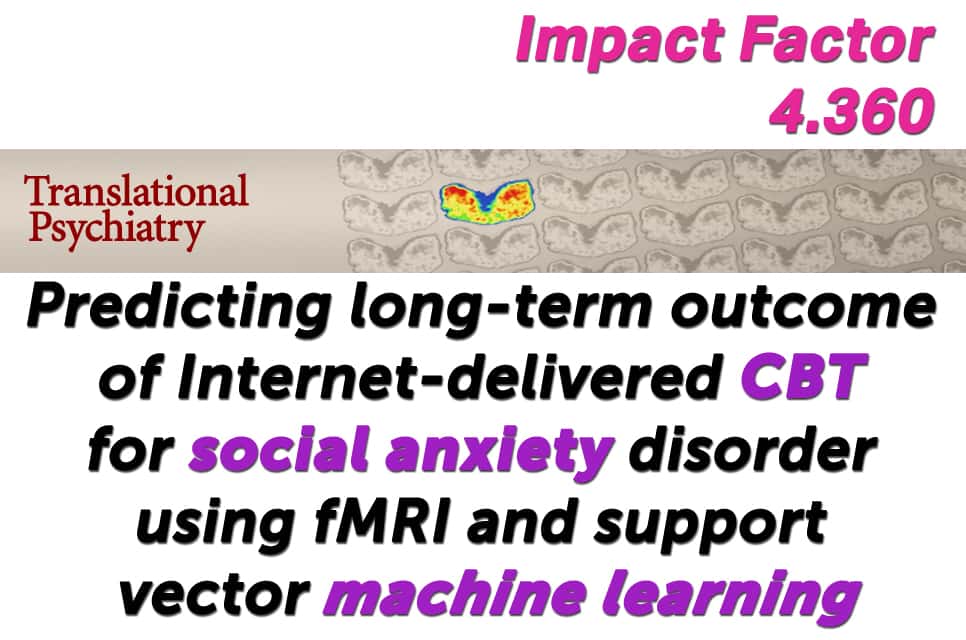Idag publicerade vi en ny studie i Nature tidskriften Translational Psychiatry (impact factor 4.360). Artikeln handlar om hur hjärnan förändras av kognitiv beteendeterapi.
Här är en engelsk sammanfattning av artikeln:
Cognitive behavior therapy (CBT) is an effective treatment for social anxiety disorder (SAD), but many patients do not respond sufficiently and a substantial proportion relapse after treatment has ended. Predicting an individual’s long-term clinical response therefore remains an important challenge. This study aimed at assessing neural predictors of long-term treatment outcome in participants with SAD 1 year after completion of Internet-delivered CBT (iCBT). Twenty-six participants diagnosed with SAD underwent iCBT including attention bias modification for a total of 13 weeks. Support vector machines (SVMs), a supervised pattern recognition method allowing predictions at the individual level, were trained to separate long-term treatment responders from nonresponders based on blood oxygen level-dependent (BOLD) responses to self-referential criticism. The Clinical Global Impression-Improvement scale was the main instrument to determine treatment response at the 1-year follow-up. Results showed that the proportion of long-term responders was 52% (12/23). From multivariate BOLD responses in the dorsal anterior cingulate cortex (dACC) together with the amygdala, we were able to predict long-term response rate of iCBT with an accuracy of 92% (confidence interval 95% 73.2–97.6). This activation pattern was, however, not predictive of improvement in the continuous Liebowitz Social Anxiety Scale—Self-report version. Follow-up psychophysiological interaction analyses revealed that lower dACC–amygdala coupling was associated with better long-term treatment response. Thus, BOLD response patterns in the fear-expressing dACC–amygdala regions were highly predictive of long-term treatment outcome of iCBT, and the initial coupling between these regions differentiated long-term responders from nonresponders. The SVM-neuroimaging approach could be of particular clinical value as it allows for accurate prediction of treatment outcome at the level of the individual.
[lightbox link=”http://www.carlbring.se/wp/wp-content/uploads/2015/03/TP_brain.jpg” thumb=”http://www.carlbring.se/wp/wp-content/uploads/2015/03/TP_brain.jpg” width=”822″ align=”left” title=”TP_brain” frame=”true” icon=”image” caption=””]
Läs hela artikeln (gratis):
Månsson, K. N. T., Frick, A., Boraxbekk, C-J., Marquand, A. F., Williams, S. C. R., Carlbring, P., Andersson, G., & Furmark, T. (2015). Predicting long-term outcome of Internet-delivered cognitive behavior therapy for social anxiety disorder using fMRI and support vector machine learning. Translational Psychiatry, 5, e530. doi:10.1038/tp.2015.22
